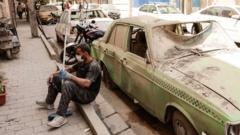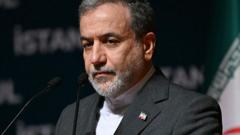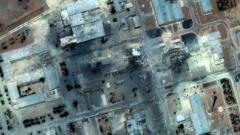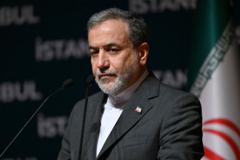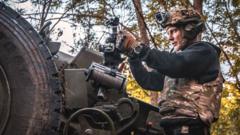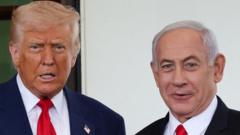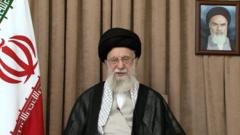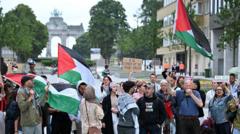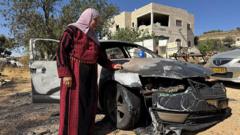Tehran, long known for its vibrant street life and cafes, faces a challenging recovery as its residents process a tumultuous period marked by war and a fragile ceasefire. The city is filled with both sparks of revival and the heavy burden of loss.
Revitalization Amidst Turmoil: The Complex Life of Tehran's Residents
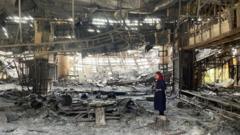
Revitalization Amidst Turmoil: The Complex Life of Tehran's Residents
Tehran witnesses a gradual return to normalcy as residents grapple with the aftermath of recent conflict.
In the heart of Iran's capital, life begins to pulse again, yet the air remains thick with anxiety. The Boof café, nestled at the site of the formerly bustling U.S. embassy, serves up refreshing iced drinks, while the clamor of street activity hints at resilience. Addressing the uneasy climate, barista Amir expresses a desire for improved U.S.-Iran relations, lamenting the difficulties posed by ongoing sanctions that stifle business and personal travel.
The café's unique interior, adorned with decades-old murals, serves as a stark reminder of the historic animosity between the nations stemming from the 1979 revolution. Customers reflect Tehran’s stark contrasts, from veiled women to those flaunting modern attire, encapsulating the city’s complex social fabric.
Last week, Ayatollah Ali Khamenei, Iran's Supreme Leader, expressed a hardened stance during his first public address since a ceasefire was announced. His remarks underscored an enduring conflict mindset, casting doubt over a potential thaw in relations with the United States. Meanwhile, the recent Israeli military strikes have had a devastating impact, leaving hospitals such as Taleghani General filled with the injured from the hostilities.
Nurse Ashraf Barghi, overseeing emergency care, recalls the horror of recent injuries, likening them to those witnessed during the Iran-Iraq war. Personal stories from victims reveal the human toll, with individuals like Morteza sharing trauma and loss not just in bodies, but in hope for change.
As Tehran slowly emerges from the scarred landscape of aerial assaults, life cautiously resumes with traffic returning to its thoroughfares and markets welcoming patrons once more. Yet the specter of fear lingers—worries of renewed conflict shadow every outing. Young women like Mina articulate deep frustrations over the state of their nation as they navigate their desolate reality.
Community gatherings, such as an open-air concert led by the Tehran Symphony Orchestra, encourage togetherness amidst distress, with citizens yearning for voice and consideration in their government’s future actions. Amidst restrictions and a history of repression, Iranians seek to articulate their aspirations for freedom, battling to reclaim the bright vibrance of their homeland.
Lyse Doucet provides this nuanced account of Tehran, constrained yet hopeful, as voices from the nation call out for peace and the possibility of a brighter future.
The café's unique interior, adorned with decades-old murals, serves as a stark reminder of the historic animosity between the nations stemming from the 1979 revolution. Customers reflect Tehran’s stark contrasts, from veiled women to those flaunting modern attire, encapsulating the city’s complex social fabric.
Last week, Ayatollah Ali Khamenei, Iran's Supreme Leader, expressed a hardened stance during his first public address since a ceasefire was announced. His remarks underscored an enduring conflict mindset, casting doubt over a potential thaw in relations with the United States. Meanwhile, the recent Israeli military strikes have had a devastating impact, leaving hospitals such as Taleghani General filled with the injured from the hostilities.
Nurse Ashraf Barghi, overseeing emergency care, recalls the horror of recent injuries, likening them to those witnessed during the Iran-Iraq war. Personal stories from victims reveal the human toll, with individuals like Morteza sharing trauma and loss not just in bodies, but in hope for change.
As Tehran slowly emerges from the scarred landscape of aerial assaults, life cautiously resumes with traffic returning to its thoroughfares and markets welcoming patrons once more. Yet the specter of fear lingers—worries of renewed conflict shadow every outing. Young women like Mina articulate deep frustrations over the state of their nation as they navigate their desolate reality.
Community gatherings, such as an open-air concert led by the Tehran Symphony Orchestra, encourage togetherness amidst distress, with citizens yearning for voice and consideration in their government’s future actions. Amidst restrictions and a history of repression, Iranians seek to articulate their aspirations for freedom, battling to reclaim the bright vibrance of their homeland.
Lyse Doucet provides this nuanced account of Tehran, constrained yet hopeful, as voices from the nation call out for peace and the possibility of a brighter future.

